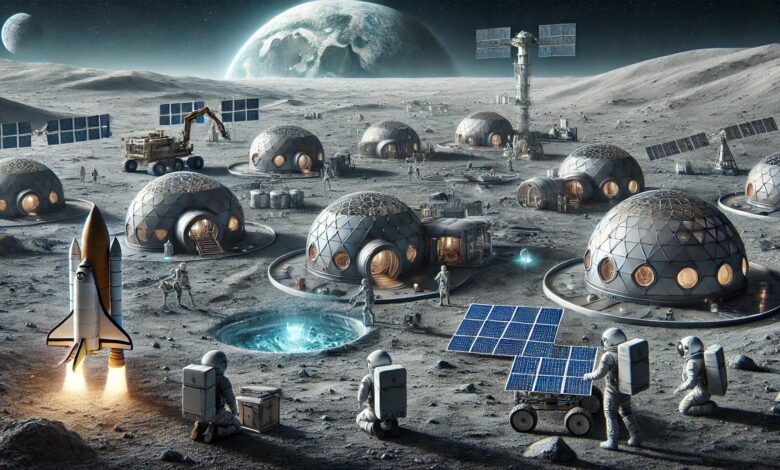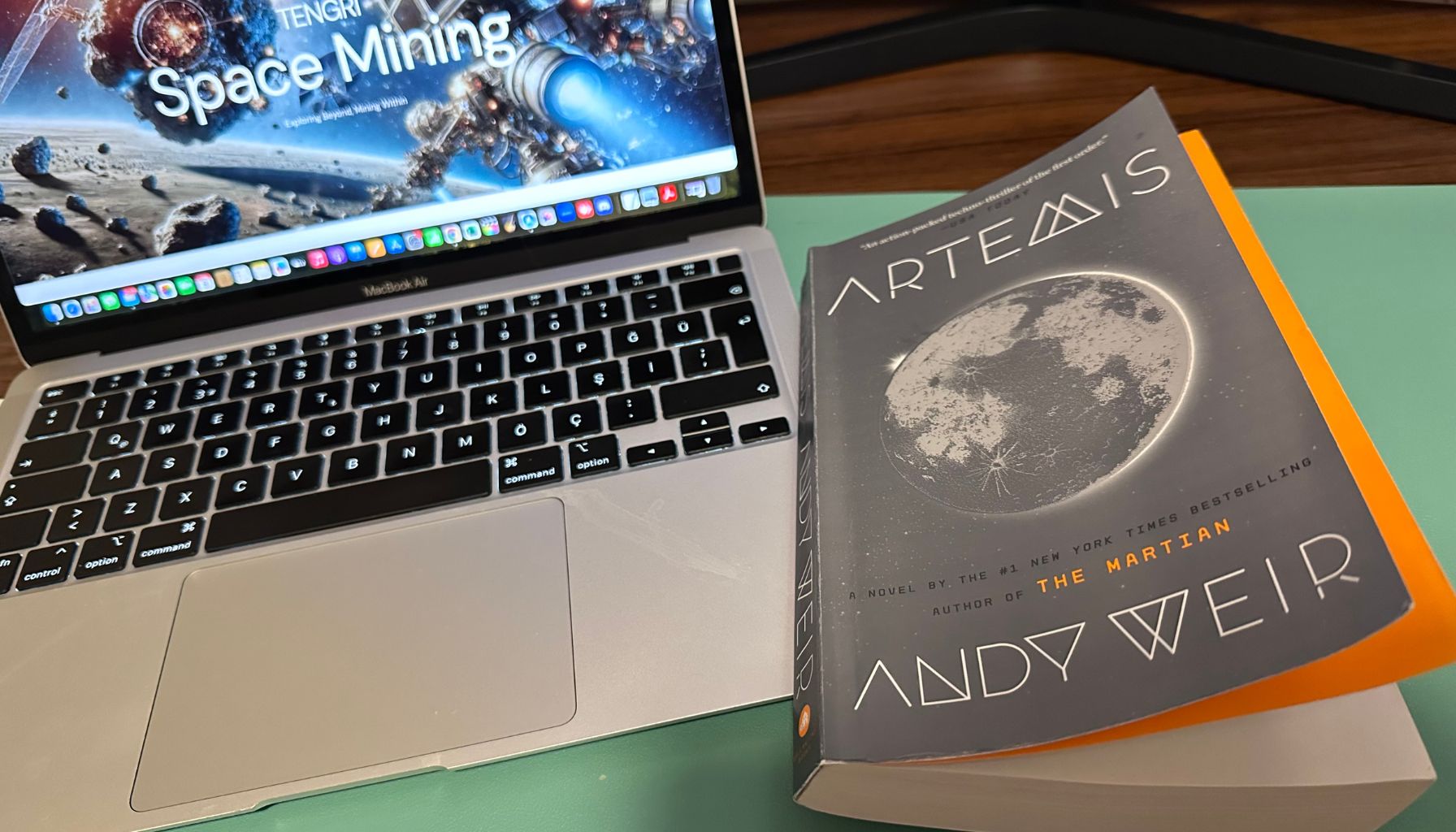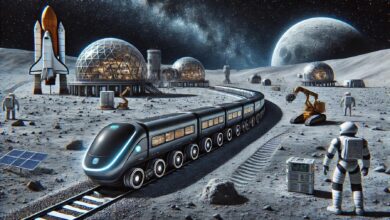
The concept of colonizing the Moon has fascinated scientists, space enthusiasts, and science fiction writers for decades. As humanity looks towards the stars, the Moon represents the first significant stepping stone towards interplanetary colonization. This article explores the feasibility of Moon colonization, the methods by which it can be achieved, and the potential costs involved in establishing a lunar settlement.
I wanted to write a story about the first human settlement somewhere other than Earth. And I just really think that’s going to be the moon. That’ll definitely be the first place that we colonize outside of Earth.
ANDY WEIR, Talking about ARTEMIS to BUSINESS INSIDER
Can the Moon Be Colonized?
The Moon, Earth’s only natural satellite, has been a subject of curiosity and study for centuries. Its proximity to Earth, just about 384,400 kilometers away, makes it an attractive candidate for colonization. However, the Moon’s environment poses significant challenges that must be addressed before colonization can become a reality.
- Lunar Environment:
- The Moon lacks a substantial atmosphere, resulting in extreme temperature variations, from approximately -173°C at night to 127°C during the day.
- The absence of an atmosphere also means no protection from harmful solar radiation and micrometeorites.
- The lunar surface is covered in a fine, abrasive dust called regolith, which can be harmful to machinery and human health if not properly managed.
- Gravity:
- The Moon’s gravity is about 1/6th of Earth’s gravity. While this could pose challenges for long-term human health, it also means that launching materials from the Moon would require significantly less energy compared to Earth.
- Resources:
- Recent missions, including those by NASA and private companies, have confirmed the presence of water ice in permanently shadowed craters at the lunar poles. Water is crucial for life support and can be broken down into hydrogen and oxygen for rocket fuel.
- The Moon also contains valuable minerals and elements such as helium-3, which could potentially be used in nuclear fusion.
How Can We Colonize the Moon?
Colonizing the Moon involves several key steps, each requiring significant technological advancements and international cooperation.
- Robotic Exploration and Initial Setup:
- Before human settlers arrive, robotic missions can establish basic infrastructure. Robots can be used to survey the land, moon mining, construct habitats, and begin mining operations.
- Autonomous and teleoperated robots can also build landing pads, power stations, and other necessary facilities.
- Habitat Construction:
- Habitats must provide protection from radiation, micrometeorites, and extreme temperatures. This could be achieved through a combination of underground structures and regolith-based shielding.
- Inflatable modules covered with regolith or 3D-printed habitats using lunar soil are potential solutions. NASA’s Artemis program is exploring various habitat designs that could be tested in upcoming missions.
- Life Support Systems:
- Closed-loop life support systems are essential for recycling air, water, and waste. Technologies being developed for the International Space Station (ISS) can be adapted for lunar habitats.
- Greenhouses and bioregenerative life support systems could provide fresh food and contribute to oxygen production.
- Resource Utilization:
- In-situ resource utilization (ISRU) will be crucial for sustainability. This includes extracting water from lunar ice, producing oxygen from regolith, and mining materials for construction and manufacturing.
- Helium-3 mining for potential future fusion reactors could be a significant economic driver for lunar colonization.
- Energy Production:
- Solar power is the most viable energy source on the Moon. Solar panels can be deployed in regions with continuous sunlight, such as the lunar poles.
- Nuclear power, using small modular reactors, is another option for providing a reliable energy source, especially during the long lunar nights.
- Transportation and Logistics:
- Regular transportation between Earth and the Moon will be necessary. This includes cargo missions to deliver supplies and equipment, and crewed missions to rotate personnel.
- The development of reusable lunar landers and space tugs will reduce costs and increase the frequency of missions.
How Expensive Is Colonizing the Moon?
Colonizing the Moon is an ambitious and costly endeavor, requiring significant investment from governments, private companies, and international partnerships. The costs can be broadly categorized into several phases:
- Research and Development:
- Developing the necessary technologies for lunar colonization, including habitats, life support systems, and ISRU technologies, involves substantial R&D costs. NASA’s Artemis program alone has a budget of $28 billion for its initial phase.
- Launch and Transportation:
- Launching materials and personnel to the Moon is one of the most significant expenses. The cost of launching a payload to the Moon is currently estimated at $1 million per kilogram, though companies like SpaceX aim to reduce this cost significantly with reusable rockets.
- Infrastructure and Habitat Construction:
- Building habitats and infrastructure on the Moon requires substantial investment. Estimates for constructing a self-sustaining lunar base range from $10 billion to $100 billion, depending on the scale and technology used.
- Ongoing Operations and Maintenance:
- Maintaining a lunar colony involves ongoing costs for transportation, life support, power generation, and repairs. These operational costs will be high initially but could decrease as technologies improve and economies of scale are realized.
- Economic and Scientific Benefits:
- The potential economic benefits of lunar colonization include mining valuable resources, scientific research, and technological advancements. The extraction of helium-3 for fusion reactors, for instance, could provide a long-term return on investment.
Colonizing the Moon is a monumental task that requires overcoming significant technical, financial, and logistical challenges. However, the potential benefits for humanity, both on Earth and in our future endeavors in space, make it a goal worth pursuing. Through international collaboration, continued technological innovation, and sustainable practices, the dream of establishing a permanent human presence on the Moon can become a reality. The journey to colonize the Moon is not just about reaching our nearest celestial neighbor; it is about taking the first steps towards a multi-planetary civilization.
Moon Colonization in Science Fiction

Moon colonization has been a captivating subject in science fiction for decades. Authors, filmmakers, and screenwriters have explored the possibilities and challenges of establishing human settlements on the Moon. Here’s a list of notable books, films, and TV series that delve into the concept of Moon colonization, along with brief descriptions:
Books
- “The Moon is a Harsh Mistress” by Robert A. Heinlein
- Set in a future where the Moon is used as a penal colony, this novel tells the story of a lunar revolt against the government of Earth. It explores themes of liberty, revolution, and the challenges of living in an extraterrestrial environment.
- “Artemis” by Andy Weir
- This novel follows Jasmine “Jazz” Bashara, a smuggler living in Artemis, the first and only city on the Moon. The story combines elements of a heist thriller with the intricacies of lunar life, highlighting the economic and social dynamics of a Moon colony.
- “2001: A Space Odyssey” by Arthur C. Clarke
- While primarily known for its exploration of space and artificial intelligence, this classic novel also features a lunar base. It depicts humanity’s first steps in space colonization and the discovery of a mysterious monolith on the Moon.
- “Luna” Trilogy by Ian McDonald
- This trilogy, starting with “Luna: New Moon,” presents a detailed and gritty portrayal of life on a colonized Moon, where powerful families control resources and power struggles are intense. The series delves into the politics, economics, and culture of a lunar society.
- “The First Men in the Moon” by H.G. Wells
- One of the earliest science fiction works about Moon travel, this novel follows two men who journey to the Moon and encounter an alien civilization. It explores the themes of exploration and the unknown.
Films
- “Moon” (2009)
- Directed by Duncan Jones, this film follows Sam Bell, a worker stationed on a lunar base extracting helium-3. As his three-year shift comes to an end, Sam begins to uncover unsettling truths about his mission and himself. The movie examines isolation and corporate ethics in the context of lunar colonization.
- “2001: A Space Odyssey” (1968)
- Directed by Stanley Kubrick and based on Arthur C. Clarke’s novel, this iconic film features a segment on a lunar base where astronauts discover a mysterious monolith. It highlights the potential for human advancement and the enigmatic aspects of space exploration.
- “Apollo 18” (2011)
- This found-footage horror film presents a fictional account of a secret Apollo mission to the Moon. The astronauts encounter hostile extraterrestrial life forms, adding a thrilling and dangerous dimension to the concept of lunar colonization.
- “For All Mankind” (1989)
- This documentary film uses NASA footage to chronicle the Apollo missions. While not strictly science fiction, it provides a realistic and inspiring portrayal of human endeavors to explore and potentially colonize the Moon.
TV Series
- “Space: 1999” (1975-1977)
- This British sci-fi series is set on Moonbase Alpha, a lunar research colony. When a massive explosion sends the Moon hurtling through space, the inhabitants of the base face various extraterrestrial challenges. The show explores survival and the unknown in space.
- “The Expanse” (2015-2022)
- Based on the novels by James S.A. Corey, this series features a colonized solar system, including the Moon. It explores the political and social dynamics of human colonies in space, with the Moon serving as a significant strategic location.
- “For All Mankind” (2019-Present)
- This alternate history series on Apple TV+ imagines a world where the global space race never ended. It depicts the establishment of a lunar base and the geopolitical implications of space colonization, blending historical elements with speculative fiction.
The concept of Moon colonization continues to inspire and intrigue, as evidenced by its extensive treatment in science fiction. These books, films, and TV series not only entertain but also provoke thought about the future of humanity in space, the challenges of extraterrestrial living, and the ethical considerations of expanding our presence beyond Earth. Through these creative works, audiences are invited to envision the possibilities and ponder the realities of making the Moon our second home.



